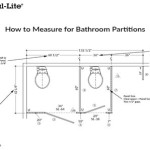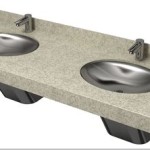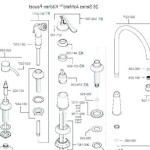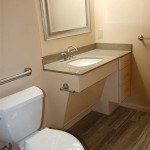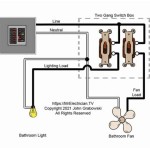Why Are Fruit Flies In My Bathroom?
The persistent presence of fruit flies in a bathroom can be a frustrating experience. While these tiny insects are commonly associated with kitchens and overripe fruit, their appearance in a bathroom indicates the presence of a suitable breeding ground and food source within that environment. Understanding the factors that attract fruit flies to a bathroom is crucial for effective prevention and elimination.
Fruit flies, scientifically classified as members of the family Drosophilidae, are small, two-winged insects characterized by their reddish-brown coloration and preference for fermenting sugars. They are attracted to decaying organic matter, particularly ripe or rotting fruits and vegetables. However, their diet extends beyond fruit to include other sugary substances, such as spilled drinks, vinegar, and fermented residues found in drains and damp areas.
The life cycle of a fruit fly is relatively short, typically lasting around 25 to 30 days. A female fruit fly can lay hundreds of eggs near a food source, and these eggs hatch into larvae within approximately 24 hours. The larvae feed voraciously on the surrounding organic matter before pupating and eventually emerging as adult flies. This rapid life cycle allows for a swift population explosion under favorable conditions, making prompt action essential to control infestations.
The presence of fruit flies in a bathroom strongly suggests a readily available food source and breeding site within the space. Unlike other insects that may randomly wander into a bathroom, fruit flies are specifically drawn to areas that provide sustenance and a suitable environment for reproduction. Identifying and eliminating these attractants is the primary step in managing a fruit fly problem.
Identifying Potential Food Sources in the Bathroom
The most common culprits attracting fruit flies in a bathroom are often located in the drains. Bathroom drains, particularly those in sinks, showers, and tubs, can accumulate organic matter such as hair, soap scum, and toothpaste residue. This accumulation creates a moist and nutrient-rich environment that serves as an ideal breeding ground for fruit flies. As the organic matter decomposes, it produces volatile organic compounds (VOCs), including fermenting sugars, which are highly attractive to fruit flies.
Improperly maintained or infrequently used drains are particularly susceptible to fruit fly infestations. The stagnant water and accumulated debris provide an undisturbed breeding environment, allowing the flies to reproduce unchecked. Additionally, any cracks or imperfections in the drainpipes can serve as entry points for fruit flies seeking access to the organic matter inside.
Another potential, often overlooked, food source in a bathroom is spilled or accumulated sugary substances. These may include spilled shampoo, conditioner, or body wash, especially those containing fruit extracts or fragrances. Sugar-based cosmetics or lotions, if not properly stored or cleaned up after use, can also attract fruit flies. Even small amounts of these substances can provide sufficient nourishment for the flies to thrive and reproduce. Furthermore, discarded cotton swabs or tissues containing cosmetic residue can also contribute to the problem.
Beyond drains and spilled substances, the grout and caulk around sinks, showers, and tubs can harbor mold and mildew. These fungi can also serve as a food source for fruit flies, especially in humid environments. The porous nature of grout and caulk allows moisture to penetrate, creating a breeding ground for mold and mildew. These fungi, in turn, release volatile compounds that attract fruit flies and provide them with a supplemental food source.
Regular cleaning and maintenance of the bathroom are essential to eliminate these potential food sources. This includes thoroughly cleaning drains, promptly wiping up spills, and addressing any mold or mildew growth. By removing the attractants, the likelihood of fruit flies establishing a presence in the bathroom is significantly reduced.
Addressing Breeding Sites and Promoting Sanitation
Once potential food sources have been identified and addressed, it is crucial to focus on eliminating breeding sites. This involves thoroughly cleaning and sanitizing the bathroom to remove any remaining organic matter and prevent future infestations. One effective method for cleaning drains is to use a drain cleaner specifically designed to dissolve organic buildup. Follow the manufacturer's instructions carefully, and ensure adequate ventilation during use.
Alternatively, a homemade drain cleaning solution can be prepared using baking soda and vinegar. Pour approximately half a cup of baking soda down the drain, followed by one cup of vinegar. Allow the mixture to fizz and bubble for about 30 minutes, then flush the drain with hot water. This combination helps to loosen and dissolve organic matter, effectively cleaning the drainpipes.
In addition to cleaning drains, thoroughly scrubbing all surfaces in the bathroom is essential. Pay particular attention to areas prone to moisture buildup, such as around sinks, showers, and toilets. Use a disinfectant cleaner to kill any remaining bacteria or fungi that may be attracting fruit flies. Regularly cleaning the grout and caulk with a bleach-based cleaner can help to prevent mold and mildew growth.
Maintaining proper ventilation in the bathroom is also crucial for preventing fruit fly infestations. Humid environments promote the growth of mold and mildew, which, as previously mentioned, can serve as a food source for fruit flies. Ensure adequate ventilation by opening windows or using a ventilation fan after showering or bathing. This helps to reduce moisture levels and discourage the growth of fungi.
Regularly emptying and cleaning the bathroom trash can is another important step in preventing fruit fly infestations. Discarded tissues, cotton swabs, and other waste can attract fruit flies if left in the trash can for extended periods. Use a trash can with a tight-fitting lid to prevent odors from escaping and attracting flies. Empty the trash can frequently, especially if it contains any damp or soiled items.
Implementing Preventive Measures and Monitoring
After addressing existing food sources and breeding sites, implementing preventive measures is essential to prevent future fruit fly infestations. One effective technique is to use fruit fly traps to capture any remaining flies and monitor their population. There are several commercially available fruit fly traps, or a simple trap can be made at home using a small dish or jar filled with a mixture of apple cider vinegar and a few drops of dish soap.
The apple cider vinegar acts as an attractant, while the dish soap breaks the surface tension of the liquid, causing the flies to drown when they land on the surface. Place the trap near areas where fruit flies have been observed, such as near sinks or drains. Monitor the trap regularly and replace the mixture as needed.
Another preventive measure is to use drain covers or screens to prevent fruit flies from accessing the drains. These covers can be placed over the drain openings to block the entry of flies while still allowing water to flow through. Regularly cleaning the drain covers to remove any accumulated debris is essential to maintain their effectiveness.
To further minimize the risk of fruit fly infestations, avoid leaving standing water in the bathroom. Wipe up any spills or puddles promptly, and ensure that shower curtains and bath mats are properly dried after use. Addressing any leaky faucets or plumbing issues is also crucial, as these can create a constantly moist environment that attracts fruit flies.
Regularly monitoring the bathroom for signs of fruit flies is essential for early detection and intervention. Pay attention to areas where fruit flies have been observed in the past, and promptly address any potential food sources or breeding sites. By implementing these preventive measures and maintaining a clean and sanitary bathroom environment, the likelihood of fruit fly infestations can be significantly reduced.

Get Rid Of Fruit Flies In The Bathroom Budget Plumbing

Fruit Flies In The Bathroom Get Rid Of Them Michael S Plumbing Orlando

Why Are There Fruit Flies In My Bathroom And How Can I Get Rid Of Them
Jab Plumbing Solutions Blog Blocked Drain Plumbers

5 Easy Ways To Get Rid Of Drain Flies Fast

Why Fruit Flies Are In The Bathroom

Got Fruit Flies In Your Bathroom Here S How To Get Rid Of Them Phyxter Home Services
How To Get Rid Of Gnats In My Bathroom Could They Have Laid Their Eggs Shower Curtain Quora

How To Get Rid Of Fruit Flies In The Bathroom Fantastic Services

How To Rid Of Drain Flies Forbes Home
Related Posts
